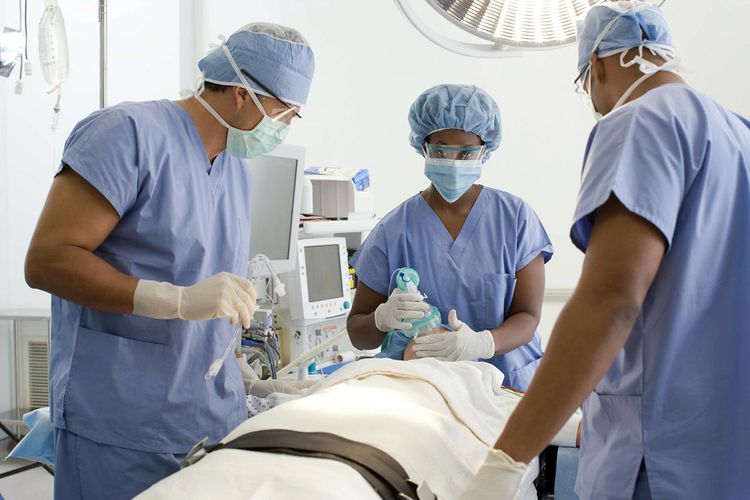Extragonadal Germ Cell Tumors: Symptoms, Causes, Treatment
What are the symptoms of extragonadal germ cell tumors?
Extragonadal germ cell tumors (EGCTs) are rare tumors that originate from germ cells, the cells that give rise to sperm and eggs. These tumors can occur in various parts of the body outside the gonads (ovaries and testes). The symptoms of EGCTs can vary depending on the location and size of the tumor. Common symptoms may include:
- Abdominal pain: Tumors in the abdomen or pelvis can cause pain or discomfort.
- Swelling: Swelling or a lump may be noticeable, especially if the tumor is close to the surface of the body.
- Mass effect: Large tumors can exert pressure on nearby organs or structures, leading to symptoms such as bowel or bladder dysfunction.
- Respiratory symptoms: Tumors in the chest or mediastinum (the area between the lungs) can cause symptoms such as coughing, chest pain, or difficulty breathing.
- Neurological symptoms: Tumors in the brain or central nervous system can cause symptoms such as headaches, dizziness, weakness, or changes in vision or hearing.
- Endocrine symptoms: EGCTs can secrete hormones or disrupt hormone production, leading to symptoms such as early puberty, breast enlargement (gynecomastia), or changes in sexual function.
- General symptoms: Some people with EGCTs may experience general symptoms such as fatigue, weight loss, or fever.
It’s important to note that these symptoms can also be caused by other conditions, so it’s essential to consult a healthcare provider for a proper diagnosis if you experience any of these symptoms. EGCTs are typically diagnosed through imaging studies, biopsy, and laboratory tests. Treatment for EGCTs may include surgery, chemotherapy, radiation therapy, and other targeted therapies, depending on the type and stage of the tumor.
What are the causes of extragonadal germ cell tumors?
Extragonadal germ cell tumors (EGCTs) originate from germ cells, which are the cells that give rise to sperm and eggs. These tumors can occur in various parts of the body outside the gonads (ovaries and testes), but the exact cause of EGCTs is not well understood.
One theory is that EGCTs develop from germ cells that migrate to abnormal locations during embryonic development. These cells may then give rise to tumors later in life. Another theory is that EGCTs may develop from pluripotent stem cells, which are capable of differentiating into various cell types, including germ cells.
Certain risk factors may increase the likelihood of developing EGCTs, including:
- Genetic factors: Some genetic conditions, such as Klinefelter syndrome, may be associated with an increased risk of developing EGCTs.
- Environmental factors: Exposure to certain environmental toxins or chemicals may play a role in the development of EGCTs, although specific associations have not been well established.
- Medical history: Individuals with a history of certain medical conditions, such as cryptorchidism (undescended testes), may have an increased risk of developing EGCTs.
- Age and sex: EGCTs are more common in males and typically occur in adolescents and young adults, although they can occur at any age.
It’s important to note that while these factors may increase the risk of developing EGCTs, most people with these risk factors do not develop these tumors. The exact interplay of genetic, environmental, and other factors in the development of EGCTs is still being studied.
What is the treatment for extragonadal germ cell tumors?
The treatment for extragonadal germ cell tumors (EGCTs) depends on several factors, including the location of the tumor, the extent of the disease, and the type of germ cell tumor. Treatment typically involves a combination of surgery, chemotherapy, and sometimes radiation therapy.
- Surgery: Surgery is often used to remove the tumor, if possible. The goal of surgery is to remove as much of the tumor as possible while preserving nearby organs and tissues. In some cases, surgery may not be possible due to the location or size of the tumor.
- Chemotherapy: Chemotherapy is often used to treat EGCTs, either before surgery (neoadjuvant chemotherapy) to shrink the tumor or after surgery (adjuvant chemotherapy) to kill any remaining cancer cells. The specific chemotherapy drugs used depend on the type and stage of the tumor.
- Radiation therapy: Radiation therapy may be used in some cases to kill cancer cells or shrink the tumor. It is often used in combination with surgery and/or chemotherapy.
- High-dose chemotherapy with stem cell transplant: In some cases, high-dose chemotherapy may be used, followed by a stem cell transplant to help restore the bone marrow’s ability to produce blood cells.
- Targeted therapy: Targeted therapy may be used in some cases to target specific genetic mutations or pathways that are driving the growth of the tumor.
- Clinical trials: Participation in clinical trials may be an option for some patients, as researchers are constantly studying new treatments for EGCTs.
The treatment approach for EGCTs is often complex and may require a multidisciplinary team of healthcare providers, including oncologists, surgeons, radiation oncologists, and other specialists. The goal of treatment is to cure the cancer while preserving as much normal tissue and function as possible. The specific treatment plan will depend on the individual patient’s circumstances and the characteristics of the tumor.




